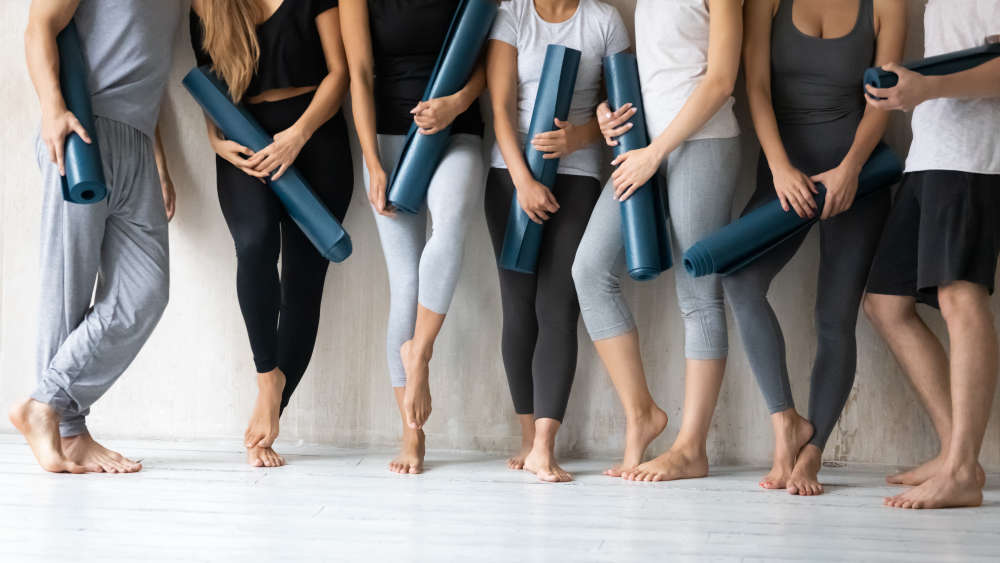
Improving posture is important for maintaining good overall health and preventing musculoskeletal issues such as back pain, neck pain, and poor circulation. Here are some tips to help you improve your posture:
Nobody wants to have to go through their day-to-day life with back pain, but in particular, unnecessary back pain caused by poor maintenance which is easily incorporated into our lives. I'm not referring to pain caused my degenerative conditions or injury, but pain caused by spending too much time sitting at a desk, a weak core or generally slouching when sitting or relaxing. Below, we have 7 ways which you can improve your posture and prevent unnecessary back pain.
1. Awareness
As with many things in life, the first step to improve something is awareness. Start to pay closer attention to your posture throughout the day, especially when sitting or standing for long periods. Whether you are sitting, standing, or walking. Make a conscious effort to maintain a straight back, shoulders, and keep your head aligned with your spine. When I was training to become a qualified Yoga instructor, one of the ways we were taught to help students improve their posture at a desk was to simply tuck your chin back into your body a little, as we can often find ourselves placing our head too far forwards when doing too muck desk work.

2. Sit properly (at a desk or table)
Sit with your back straight and your shoulders relaxed. Make sure your feet are flat on the floor, and your knees are at a 90-degree angle. If you are using an office desk chair, try to adjust the height to allow your knees to be at the 90 degree angle. Sit back in the chair with your back straight and shoulders relaxed, gently tucking the tailbone in underneath the spine to ensure that you are not loading too much weight through your lumbar spine.

3. Stand up straight
This may mean taking regular desk breaks, or investing in a standing desk if possible. Stand with your feet shoulder-width apart, and your weight evenly distributed on both feet and through all ten toes. Keep your shoulders relaxed, and your chin parallel to the floor, ensuring your neck is directly on top of your spine, not jutting forwards. Imagine a string pulling you upwards from the top of your head to maintain an upright posture.

4. Stretch
Do regular stretching exercises that target your back, neck, and shoulders. This will help loosen tight muscles and improve your posture over a period of time. If you are struggling to know what to do and not under the care of a physio or fitness professional, Youtube has some brilliant tutorials for every type of back issue! If you like Yoga, I recommend trying the 'thread the needle' (pictured below) pose as an easy reliever for upper back tightness, especially if you spend long periods of time sat at a desk.

5. Strengthen your core
Strong core muscles (which includes the muscles of your abdomen, back, and pelvic floor) are fundamental to maintaining your spinal health and improving your posture. This is often overlooked when people suffer with general back pain. Try targeted exercises to improve your core such as planks, bridges, and bicycle crunches. If you're not a fan of gym style exercises, why not try a Pilates or Yoga class? A strong core can be established through a 'softer' exercise practise and Pilates in particular is hugely beneficial for those looking to improve their core.

6. Get professional help if needed
If you have specific concerns about your posture or persistent pain related to poor posture, or you believe your back pain is related to a previous injury, it's important to consider seeking professional help from a physical therapist, chiropractor, or other similar healthcare provider who can assess your posture, identify any underlying injuries or issues and provide targeted exercises and treatment accordingly.
Remember that improving your posture is a gradual process, and it takes time and practice. Be patient and consistent, and you will see results over time. Be consistent with your exercises and regular stretching within your daily routine and you will see the long-term improvements.


 Pilates or Yoga - which practise will suit you most?
Pilates or Yoga - which practise will suit you most?
 Active Lifestyles: How to Keep Fit and Healthy in Mid Sussex
Active Lifestyles: How to Keep Fit and Healthy in Mid Sussex
 These are things you'll want to know about skincare in 2024
These are things you'll want to know about skincare in 2024
Comments
Add a comment